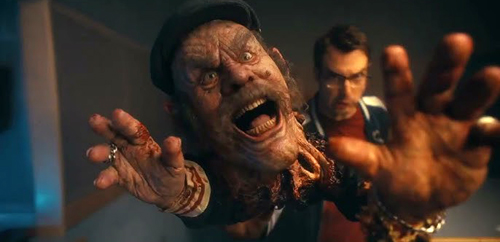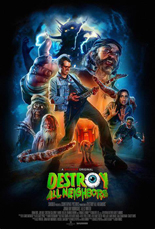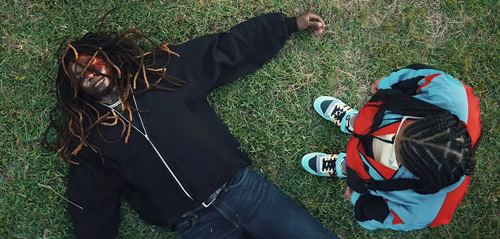
For lovers of wacky plots, goopy 1980s-inspired practical effects and prog rock, Destroy All Neighbors delivers the goods. The Shudder original film follows William (Jonah Ray, Netflix’s Mystery Science Theater 3000), an aspiring musician toiling away at his magnum opus, a spacey prog album he’s been fine-tuning for years. His girlfriend, Emily (Kiran Deol, Seven Psychopaths), supports William’s endeavors, even as she grows tired of his excuses for not finishing the record. His latest distraction is new neighbor Vlad (Alex Winter, aka Bill from the Bill & Ted films), who plays loud techno music all hours of the day while noisily working out.
The racket becomes unbearable for William, so he works up the nerve to confront Vlad face to face, but through a series of mishaps ends up accidentally decapitating the man. Rather than go to the police, William first dismembers then disposes of the corpse — or at least he tries.

Writers Mike Benner, Jared Logan and Charlies A. Pieper, along with director Josh Forbes (Contracted: Phase 2), craft a tale that need not be taken too seriously. The film is deeply silly in the best ways possible. It’s a gorier Bugs Bunny cartoon, a less perverse Re-Animator. Ray particularly shines as the hapless William, while Winter, using a thick Romanian accent and wearing prosthetics so heavy he’s unrecognizable, quite literally disappears into his role. Hollywood veteran Gabe Bartalos designed Winter’s makeup, and his resume includes work on Friday the 13th Part VI: Jason Lives, The Texas Chainsaw Massacre Part 2, Frankenhooker and several Leprechaun films, to name just a few.
With just under an hour and a half runtime, Destroy All Neighbors is a quick, hilarious and gory good time. Put it on when you want something goofy and gross, but not too heavy. —Christopher Shultz










